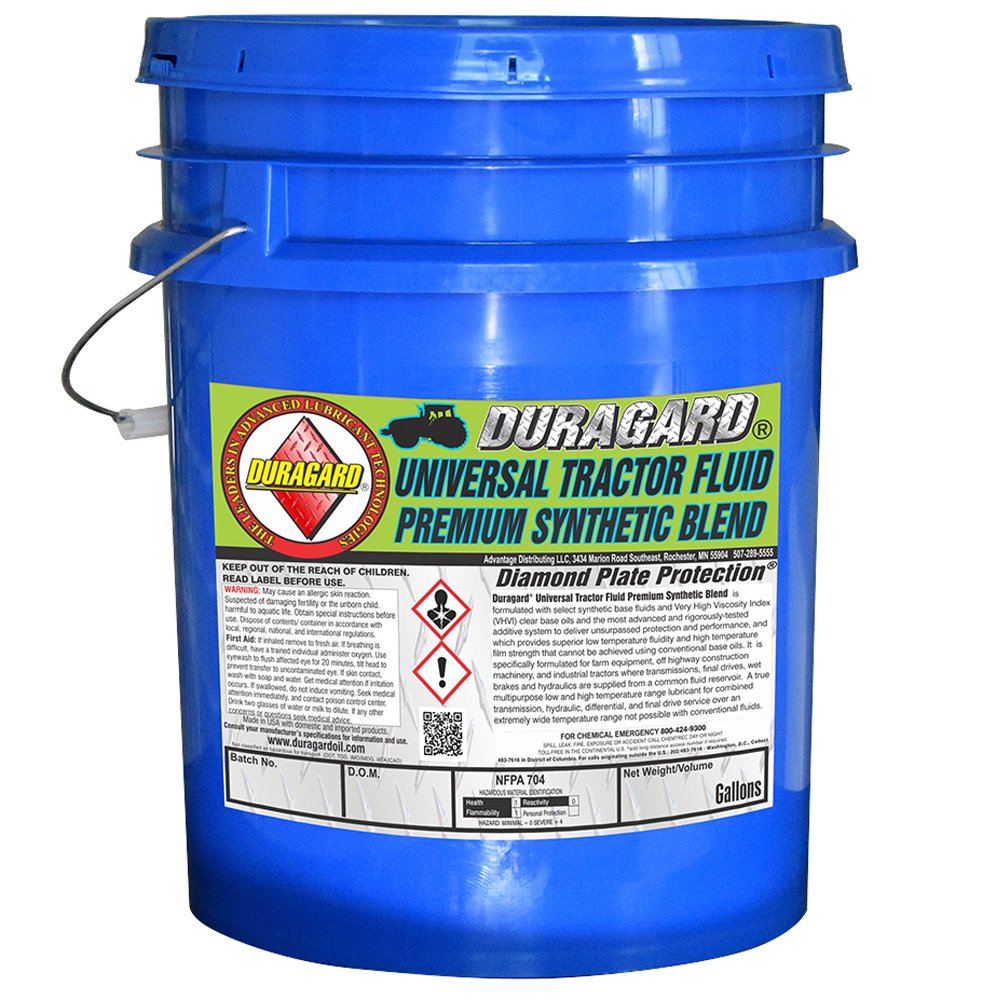How to check hydraulic fluid on Massey Ferguson Tractor

Hydraulic fluid is an essential component of machinery, including Massey Ferguson tractors. It plays a crucial role in the operation of hydraulic systems, providing the necessary lubrication and transferring power to various components. Proper maintenance of hydraulic fluid is necessary to ensure tractor performance and longevity. In this article, we will discuss the importance of hydraulic fluid, how to check it on a Massey Ferguson tractor, how to change it, and some maintenance tips to keep the hydraulic system in optimal condition.
What is Hydraulic Fluid?
Hydraulic fluid, also known as hydraulic oil, is a specially formulated fluid designed for use in hydraulic systems. It serves multiple purposes, including lubrication, heat transfer, and energy transmission. The hydraulic fluid is responsible for transferring power from the hydraulic pump to other components, such as hydraulic cylinders or motors, enabling them to perform their intended tasks. There are different types of hydraulic fluids available, including mineral-based, synthetic, and biodegradable options, each with its own advantages and applications.

Importance of Checking Hydraulic Fluid Regularly
Regularly checking the hydraulic fluid level is crucial for the proper functioning of the hydraulic system in a Massey Ferguson tractor. **Low or contaminated hydraulic fluid can significantly impact tractor performance and even lead to costly damage**. Insufficient fluid levels can result in reduced hydraulic pressure, causing slow or weak operation of hydraulic components, such as loaders or backhoes. Contaminated hydraulic fluid can cause increased friction and wear, leading to potential malfunctions and decreased overall efficiency. Regularly checking the hydraulic fluid helps identify any issues promptly and allows for timely maintenance or repairs to avoid costly downtime.
Checking Hydraulic Fluid on a Massey Ferguson Tractor
Now let's dive into the step-by-step process of checking the hydraulic fluid on a Massey Ferguson tractor.
Preparing the Tractor
Before checking the hydraulic fluid, it is important to ensure the tractor is in a safe and stable position. Park the tractor on a level surface and engage the parking brake to prevent any unintended movement. If necessary, secure the tractor with wheel chocks to further enhance stability. **Always refer to the tractor's manual for specific instructions and precautions**.
Locating the Hydraulic Fluid Reservoir
The hydraulic fluid reservoir is typically located near the rear of the tractor, beneath the operator's platform. It is often a rectangular or cylindrical container made of metal or plastic, easily identifiable by its fill cap or dipstick. Some Massey Ferguson tractors may also have a sight glass for visual inspection of the fluid level. **Refer to the tractor's manual or consult a mechanic if you are unsure about the location or appearance of the hydraulic fluid reservoir**.
Checking the Hydraulic Fluid Level
Once you have located the hydraulic fluid reservoir, follow these steps to check the fluid level:
- Ensure the tractor's engine is turned off and cool to prevent any accidental burns.
- Remove the fill cap or dipstick from the hydraulic fluid reservoir. Wipe it clean with a cloth or paper towel.
- Insert the dipstick back into the reservoir, making sure it is fully seated.
- Remove the dipstick again and observe the fluid level on the stick. **Make note if the fluid level is below the recommended range**.
- If your tractor has a sight glass, **check the fluid level indicated by the glass**. It should be within the recommended range.
- If necessary, add hydraulic fluid to bring the level up to the recommended range. **Use the appropriate type and grade of hydraulic fluid specified by your tractor's manual**.
- Replace the fill cap or dipstick securely.
Interpreting the Fluid Level Reading
The fluid level reading obtained from the dipstick or sight glass can provide valuable information about the hydraulic system's condition. Here are some possible interpretations:
- If the fluid level is within the recommended range, **you can be confident in the hydraulic system's proper functioning**.
- If the fluid level is below the recommended range, **it indicates a potential hydraulic fluid leak or insufficient fluid level**. In such cases, it is essential to inspect the system for leaks and address them promptly. **Using a leak detection fluid or dye can aid in identifying any invisible leaks**.
- If the fluid level is significantly high, **it may point to an overfilled reservoir**, which can cause foaming and reduce hydraulic system performance. In this situation, consult your tractor's manual for guidance on proper fluid levels and consider draining excess fluid.
Changing Hydraulic Fluid on a Massey Ferguson Tractor
Regularly changing the hydraulic fluid is an important aspect of maintaining the hydraulic system's performance and preventing potential issues. Here, we will provide a step-by-step guide on how to change the hydraulic fluid on a Massey Ferguson tractor.
Gathering the Necessary Supplies
Before starting the fluid change process, gather the following supplies:
- Wrench or socket set
- Drain pan or bucket
- New hydraulic fluid (refer to the tractor's manual for the recommended type and quantity)
- Clean rags or paper towels
Ensure you have the correct wrench or socket size to remove the drain plug or access the hydraulic fluid reservoir.
Draining the Old Hydraulic Fluid
Follow these steps to safely drain the old hydraulic fluid from the system:
- Position the drain pan or bucket beneath the drain plug or opening.
- Using the wrench or socket, remove the drain plug or access the hydraulic fluid reservoir.
- Allow the old fluid to drain completely into the pan. **Ensure you catch and contain all the fluid, as it can be harmful to the environment if not properly disposed**.
- Inspect the drained fluid for any signs of contamination, such as metal shavings or debris. **If you notice any unusual substances, it may indicate a problem with the hydraulic system that requires further investigation**.
- Clean the drain plug or reservoir opening thoroughly with a clean rag or paper towel.
Replacing with Fresh Hydraulic Fluid
Now, it's time to replenish the system with fresh hydraulic fluid:
- Refer to the tractor's manual for the recommended type and quantity of hydraulic fluid.
- Using a clean funnel, pour the new hydraulic fluid into the reservoir. **Avoid overfilling; maintain the fluid level within the recommended range**.
- Replace and secure the drain plug or reservoir cap tightly.
Running System Checks
After changing the hydraulic fluid, it is important to verify that the hydraulic system is working properly. Follow these steps:
- Start the tractor's engine and allow it to idle for a few minutes.
- Operate the hydraulic components, such as the loader or three-point hitch, to ensure smooth and responsive operation.
- Observe for any unusual noises or vibrations during operation.
- Check for any signs of leaks around hydraulic connections or components.
If you notice any issues during the system checks, consult a professional or refer to your tractor's manual for further troubleshooting and repair guidance.
Maintenance Tips for Hydraulic Fluid in Massey Ferguson Tractors
Regular maintenance is key to keeping the hydraulic system in optimal condition. Here are some tips to help you maintain the hydraulic fluid in your Massey Ferguson tractor:
Filtering and Flushing the Hydraulic System
Regularly filter and flush the hydraulic system to remove any built-up contaminants. This helps maintain proper fluid cleanliness and prolongs the life of system components. Refer to your tractor's manual for specific instructions on how to perform this maintenance task and the recommended frequency.
Monitoring for Contamination
Regularly monitor the hydraulic fluid for signs of contamination. Look for visible particles, cloudiness, or a milky appearance, as these may be indications of contaminants present in the fluid. If you detect any such signs, take immediate action to identify and eliminate the source of contamination, and consider replacing the fluid if necessary.
Replacing Hydraulic Filters
Hydraulic filters play a crucial role in preventing contaminants from entering the hydraulic system. Over time, these filters can become clogged and lose their effectiveness. Regularly inspect and replace hydraulic filters as recommended by the tractor's manual. Ensure you use the correct filter size and type for your specific Massey Ferguson tractor model.
Storing Hydraulic Fluid Properly
Proper storage of hydraulic fluid helps maintain its quality and effectiveness. **Store hydraulic fluid in a clean, dry, and well-ventilated area**, away from direct sunlight and extreme temperatures. Ensure the container is tightly sealed to prevent moisture or airborne contaminants from entering. Avoid storing hydraulic fluid for longer than its recommended shelf life and never mix different types or grades of hydraulic fluids.
Checking and maintaining the hydraulic fluid in your Massey Ferguson tractor is crucial for optimal performance and longevity of the hydraulic system. Regularly checking the fluid level, and performing routine maintenance tasks such as changing filters, filtering and flushing the system, and properly storing the hydraulic fluid, can help prevent costly repairs and ensure smoother operation. **Remember to always follow the tractor's manual instructions and consult a professional if you encounter any issues**. By prioritizing these maintenance tasks, you can maximize the effectiveness and lifespan of your Massey Ferguson tractor's hydraulic system.

If you want to know other articles similar to How to check hydraulic fluid on Massey Ferguson Tractor you can visit the category Automotive Mechanics.
